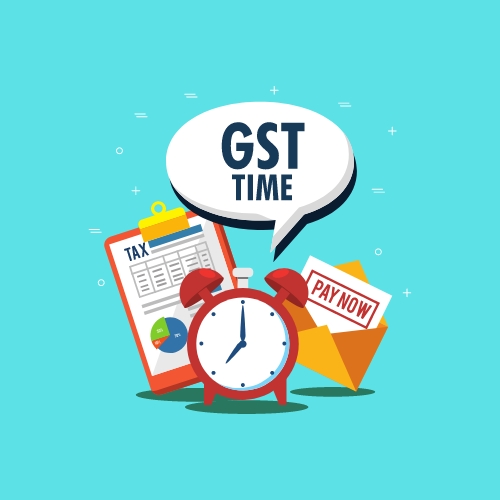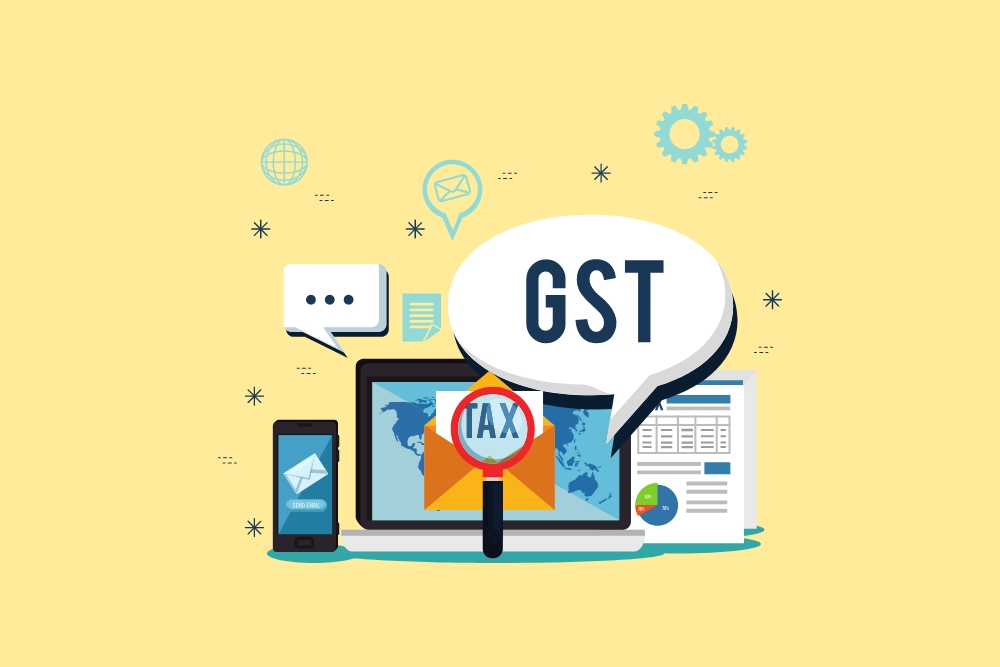GST, or Goods and Services Tax, that came into effect in India on 1 July, 2017 attracted a fair share of praise as well as criticism. Be it regarding the tax slabs being used in the tax structure, or certain goods and services exempted from it, long discussions have entailed about the ramifications of minute alterations in the GST tax system.
Every policy introduced has its advantages, as well as disadvantages; GST isn’t alien to this phenomenon.
With adequate time passed since its introduction, we’re now equipped to analyse the Advantages and Disadvantages of GST in India
What is GST and why was it introduced?
GST, or Goods and Services Tax is a value-added tax levied on the supply of goods and services. It is levied on each stage of value-addition and is destination-based, ie. it is levied where the final consumption happens as opposed to where production happens (as is the case in excise duties).
The motive behind the introduction of GST was to subsume the erstwhile taxes that were levied and collected at various stages of production and differed from state to state. Thus, several taxes at the central as well as state level like Central Excise Duty, Service Tax, State VAT, Octroi, Purchase Tax, Entertainment Tax, etc were absorbed within the new Taxation system.
The idea to introduce a single tax system was on the anvil since 2003, with the Kelkar Task Force suggesting a tax system on the value-addition principle.
While a proposal to introduce a National level tax system was mentioned in the Budget speech of FY 2006-07 and a bill for the same was introduced in the parliament in 2011, it could only fructify by 2016.
The cardinal motive to bring about this taxation system was to bring about uniformity in the tax system and fix the leakages emerging out of variability.
How many GST slabs are there?
Different GST slab rates have been introduced to raise transparency between buyers and sellers throughout the taxation process. Each of these slabs comprises a variety of items depending on various parameters.
There are six tax slabs to pay GST. The first 4 slabs have 5%, 12%, 18%, and 28%. There are a few lesser-used GST rates, such as 3% and 0.25%. A 0% slab indicates no tax is being paid for any service.
Moreover, individuals accountable for the composition tax are mandated to pay GST at low or nominal rates, such as 1.5%, 5%, or 6% on their income. GST also comprises the concepts of TDS and TCS, which have rates of 2% and 1%, respectively.

The GST legislation levies a cess at rates ranging from 1% to 204% on the sale of some goods, including cigarettes, tobacco, aerated water, gasoline, and motor vehicles.
It is important to know about the world economies which implemented GST before us to overcome their thorniness and how the benefits are realised by GST, viz a single tax system and easy credit to the input.
Also Read: GST Certificate Download Online: Easy Step-by-Step Guide
Advantages and Disadvantages of GST
Advantages of GST
GST regime offers some benefits – like a single tax system, Simplification of Taxes or Boost to the economy. Let’s see the advantages of GST in detail.

1. Single Taxation System.
GST has allowed a single tax rate for each product/service category to be applicable throughout the country. It subsumes various Central as well as State level taxes like Central Excise Duty, Service Tax, Octroi, Purchase Tax, etc. The Single Tax system ensures the cost of the products is more transparent and not variable for the consumer on the basis of the state they are in.
2. Progressive Tax Liability.
The tax slabs of GST take into consideration the nature of the products and the economic strata that consumes them. Thus, essential products and services are placed in lower tax slabs, attracting lower tax liability while luxury and sin goods are placed in the highest tax bracket of 28%. The sin goods also attract a cess that is used for compensating the states for switching over to GST.
3. Democratic Control.
All the decisions including the tax rates, the number of slabs, applicability on states, goods to be exempted, and future decisions with regard to the tax structure of GST are taken by the GST Council, which has the representation of both the Centre and the States. The decisions are usually taken by consensus and voting in case there is no consensus.
4. Quick Dispute Resolution for unburdening the courts.
GST has subsumed a plethora of taxes and duties that had created confusion for the industries and led to an inordinate amount of litigation at times. As per the Goods and Services Act (2017), the constitution of a GST Appellate Tribunal is mandated for quick dispute resolution. This would decrease the legacy cases pertaining to tax disputes languishing in different levels of the judiciary throughout the country.
5. Reduced prices for products.
GST eliminates the cascading effects of the earlier taxation system that led to increased prices. Under GST, businesses can claim Input Tax Credits (ITCs). Thus, the mechanism of ITC could be used by the government to make certain products cheap while making demerit goods expensive. Higher ITCs along with a lower tax slab would decrease the price of a product category.
6. Transparency in logistics.
It is mandatory for businesses as well as transporters to generate an e-Way bill whenever the value of the goods being transported is above a threshold amount. For inter-state transport, the threshold is INR 50,000 while States have been given the leeway to decide the threshold amount for intra-state transportation. This reduces the possibility of tax evasion by not reporting the goods sold and thus is among the most important advantages of GST.
Also Read: GST State Code List and Know your GST Jurisdictions
7. Increase In Foreign Investment.
Under the GST regime, India has become a single market instead of a geographical area with multiple markets. A single unified market is conducive to investment by foreign players. Since the GST regime was rolled out, India’s FDI has increased considerably with the country securing the third spot for the highest FDI in new/greenfields projects in 2022.
8. Reduced channels for tax evasion.
Apart from the mandate of generating an e-Way bill for transportation, the GST regime has made it mandatory to generate an e-invoice for all B2B transactions from 1st August, 2023 onwards. This is aimed to increase transparency in the system and reduce the possibility of availing of fake ITCs (Input Tax Credits).
9. Simple and easy procedure for registration.
The whole process for GST Registration is digital and straightforward. New businesses benefit from this since one doesn’t have to run pillar after post for registration. The documents required for the registration can be submitted in JPG/PDF format on the registration portal without any need to send them by post.
10. Back-end Integration for accuracy of data.
One of the advantages of GST that cannot be ignored is that all the components of the GST Network are integrated to ensure the data is accurate. Thus, e-invoices generated would automatically generate a corresponding e-way bill for transportation and populate the GST returns with that specific transaction.
Suggested Read: What is OCEN? How it Helps in Digital Lending?
Disadvantages of GST

1. Complex Migration.
The whole system of GST functions digitally, from registration to tax filings. This is a major disadvantage of GST since most of the MSMEs in India function in the unorganised sector and have little technological know-how. This puts small enterprises at a disadvantage since they would have to navigate through unfamiliar processes.
2. Increased compliance costs.
The costs of compliance are relatively higher in the new regime, with the sales not matching up to expectations. The costs range from software updation to hiring employees solely devoted to GST compliance. With the newer obligations to generate e-way bills and e-invoices, the compliance cost would only increase for enterprises.
Must Read: GST Composition Scheme – Features, Limits, Benefits & Rules
3. Inverted Duty Structure.
The tax rates of several product categories is such that there exists an inverted duty structure, ie. the tax paid on inputs is more than the tax paid on the sale of the final product. This not only leads to higher costs for manufacturing, but also locks up the extra tax paid as Unutilised ITCs. This does not bode well for the economy as it makes importing more lucrative vis-a-vis manufacturing.
Also Read: What are the 4 types of GST?
4. Exceptions on certain goods and services.
There are still goods and services outside the GST regime that betrays the motive of bringing about uniformity. Alcohol used for human consumption, Petroleum and its products, Natural Gas, etc. remain outside the purview of the GST regime. Such exemptions not only hinder the path to uniformity, but also affect consumers with higher prices since companies cannot claim ITCs on such products.
5. Confusion in tax rates.
One of the biggest disadvantages of GST has been the confusion about the tax rates applicable on products. With similar products finding a place in different price slabs, the GST Council’s parameters for deciding the rates are opaque and need scrutiny. The confusion regarding tax slabs also provides loopholes in the system and leads to similar products being treated differently.
6. Loss for Producer States.
Since GST is a destination-based tax structure, tax is collected where the products or services are consumed. This shrinks the tax collections of States that are producers/exporters and do not have a developed consumption market. Thus, producer states like Punjab, Karnataka, Tamil Nadu, etc. have lost revenue since the implementation of GST.
7. Projected revenues not meeting expectations.
While the GST Council had set up a compensation cess to help recuperate States from the loss of switching to the GST regime, the projections about States’ revenues have belied the reality. Thus, the compensation cess was extended by the government after receiving several requests from the States.
8. Marginalises MSMEs.
One of the major disadvantages of GST is that it has disempowered MSMEs with higher cost of borrowing. As per a report submitted by the Indian Industry Association to the CBIC, MSMEs struggling with GST compliance are finding it hard to borrow money at affordable interest rates.
9. Late ITC refunds.
The ITC returns within GST are marred by late payments, which often locks up the working capital of businesses and hampers their productivity. The rules and by-rules of ITC refunds under the GST Act have several complexities when it comes to implementation.
10. Failed to address tax evasion and leading to scams.
The greater compliance put on businesses to avoid tax evasion has not given any results and on the contrary, has allowed new avenues for scams, which also puts the privacy of citizens in jeopardy. Loopholes in the system allow shell companies to appropriate ITCs against fake invoices.
Suggested Read: Fake Loan App List you should be aware of.
Final Words
The advantages and disadvantages of GST manifest themselves either overtly or latently in various facets of the functioning of the system.
The GST regime has definitely increased transparency throughout the supply chain, thus making tax evasion difficult. With reduced ambiguity and a uniform system, the outlets for corruption have also drastically reduced. However, the loopholes in the system have also opened up new avenues for scams with the privacy of employees and citizens at stake.
The enhanced transparency however has led to higher compliance costs for businesses with several unorganised businesses finding themselves left out.
While on one hand, it has led to increased foreign investments, it has also led to small businesses losing their market to large players.
While the GST system addresses the predicament of producer states losing revenue to consumer states in an ad-hoc manner, the problem remains unsolved because the tax system is consumption-based and will favour states with a developed market.
Suggested Read: Types of GST Returns and Their Due Dates
FAQs
1. What are the three merits of GST?
The three merits or advantages of GST among other advantages are that GST subsumes various taxes, removes cascading effects, and creates a common national market. It also increases transparency and has a fully digital process for registration.
2. What are the 4 types of GST?
GST has 4 components, namely Integrated Goods and Services Tax (IGST), States Goods and Services Tax (SGST), Central Goods and Services Tax (CGST), and Union Territory Goods and Services Tax (UTGST).
3. What is a GST number?
GST number, or GSTIN is a 15-digit unique identification number allotted to an entity registered on the GST Network. The process to get a GSTIN is completely free through the GST Portal.
4. What are the main advantages of GST?
The main advantage of GST is the uniformity and transparency it brings to the tax structure. It subsumes several taxes that were differential from region to region and created confusion, while increasing transparency through e-invoicing and e-way bills.
5. What are the disadvantages of GST?
The main disadvantages of GST are greater compliance costs, loss in revenues for states, Input Tax Credit (ITC) frauds, and confusion in tax rates.
6. Who benefits the most from GST?
States that have a well-developed consumer market benefit the most from GST while Producer or Manufacturing States stand to lose out on considerable revenue.
7. How to register for GST online?
Visit the official GST portal. Click on the Services tab and hover over the Registration tab and select New Registration. Now enter the details (PAN number, email or mobile number).
Suggested Read:
















